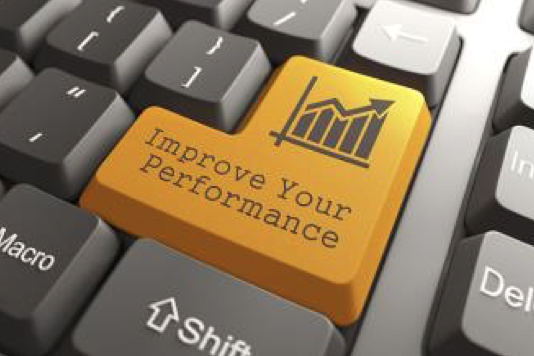Improving performance is a high priority for every senior executive. Many now realize that it is not enough just to identify and measure Key Performance Indicators (KPIs) measuring KPIs helps in identifying under-performing business areas, but will not provide the means required to fix them.
To address this, it is essential that both sides of the cause and effect equation are managed. It is necessary to understand and manage the processes that drive a business forward (cause), the performance that they achieve (effect), and the relationship between the two.
By seamlessly integrating performance metrics and scorecards into the processes they are measuring, control-ES provides that understanding and the tools to manage performance of the business.
Performance management is a strategic tool used to promote an effective organization. It ensures that individual employees’ efforts are focused on the priorities and strategies set out in the corporate and departmental business plans. It directs efforts towards effectiveness and away from merely being busy.
The success of employees depends on a clear performance management process, which recognizes the accomplishments and supports the professional development of all private/public service employees.
Our approach
We strive to extend beyond the focus on management and leadership roles so that we can build high performance and high involvement work environments for all employees, across our client companies.
Our corporate Performance & Talent Management model includes identifying critical positions, utilizing skill and competency information, conducting talent review meetings (also known as gap analysis between business needs and internal talent for key positions), and implementing strategies (such as job rotation, formal training, etc) to address the gaps.
Measuring the performances
Performance measurement is a fundamental building block of PTM (Performance & Talent Management) and a total quality organisation.
Historically, organisations have always measured performance in some way through the financial performance, be this success by profit or failure through liquidation.
However, traditional performance measures, based on cost accounting information, provide little to support organisations on their quality journey, because they do not map process performance and improvements seen by the customer. In a successful total quality organisation, performance will be measured by the improvements
seen by the customer as well as by the results delivered to other stakeholders, such as the shareholders.
“When you can measure what you are speaking about and express it in numbers, you know something about it”.
“You cannot manage what you cannot measure”. Kelvin ANON
Reviewing the performance of an organisation is also an important step when formulating the direction of the strategic activities. It is important to know where the strengths and weaknesses of the organisation lie, and as part of the ‘Plan –Do – Check – Act’ cycle, measurement plays a key role in quality and productivity improvement activities. The main reasons it is needed are:
- To ensure customer requirements have been met
- To be able to set sensible objectives and comply with them
- To provide standards for establishing comparisons
- To provide visibility and a “scoreboard” for people to monitor their own performance level
- To highlight quality problems and determine areas for priority attention
- To provide feedback for driving the improvement effort
Initially, focus on a few key goals that are critical to the success of the organisation or business, and ensure they are SMART:
Specific | Measurable | Achievable | Relevant | Timely
Assessment of service delivery at within private companies or government is not new, but linking the measures, or indicators, to program mission; setting performance targets; and regularly reporting on the achievement of target levels of performance are new features in the performance measurement movement sweeping across the public and private sectors in Europe .
